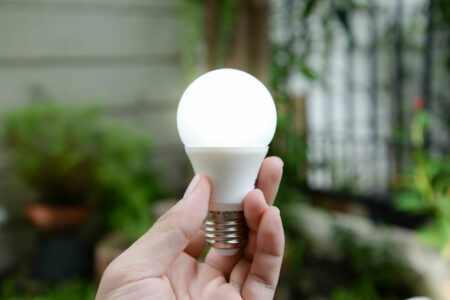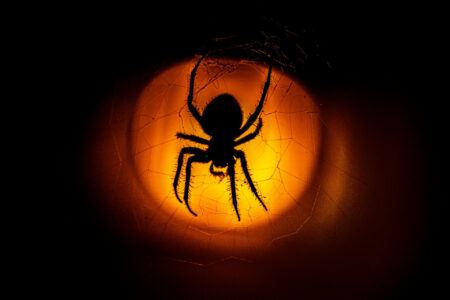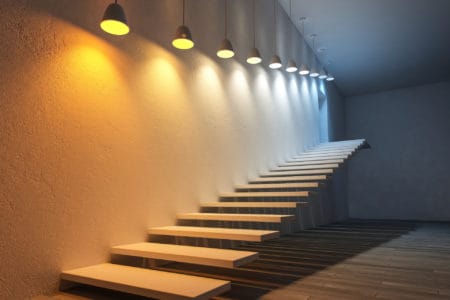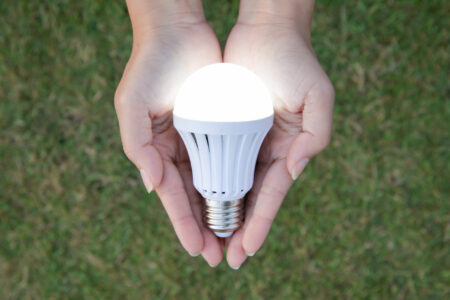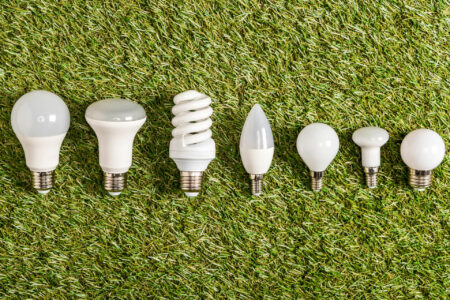You bought a new lamp with LED bulbs and after the first switch-on it shines with an uncomfortable cool white light? With a warm white LED film, you can make the light color warm white even later. In many cases, self-adhesive warm light filters can simply be stuck onto the LED. This is an easy way to solve the problem of glaring light.
Warm white filter for LEDs
From the old incandescent and halogen bulbs, we are used to a cozy warm white light. After the switch to LEDs it often comes to a surprise. The new lamps are very bright, but the light seems cold and uncomfortable. The culprit is the color temperature of the new light sources. Instead of warm white 2700 Kelvin, the new LEDs have a light color of 3000 Kelvin and more.
With a retrofittable warm white filter, the light color of your LEDs can be corrected afterwards. The following terms are common for these filters:
- Warm white film
- Warm white filter
- Warm light filter
- Orange filter
- CTO filter
- Color correction gel filter
How does a warm white filter work?
Technically the correct name for these filter films is color temperature orange filter. This is where the abbreviation CTO filter comes from. Such a filter reduces the proportion of cold white light and increases the proportion of orange light. As a result, the light source appears warmer. Even though this is a shift in the color component, the filter effect also reduces the brightness of the emitted light a little bit.
What filters are available?
Warm white LED filters are available both as self-adhesive and for own attachment by means of clamps or adhesive tape. More important is the effect of the different filter foils. A comprehensive overview with an online tool to display the color temperature shift can be found at the manufacturer Lee Filters. For home use, especially these filters are widely used:
- 204 Full CT: strong orange filter
- 205 Half CT: medium orange filter
- 206 Quarter CT: light orange filter
Which filter is the right one?
The warm white film changes the color temperature based on the available light source. Therefore, there is no simple specification of the target color temperature. This is always dependent on the existing LEDs. However, there are practical sets with several orange filters. This way you can try out the different color tones by simply holding the films in front of the light before attaching them.
Matching filters or cut them yourself?
For standard light sources like GU10 lamps, the warm white foils are already available as a suitable cut. For other dimensions, large square filters are available, which you can easily cut to right size yourself.
Apply warm white filter
Basically, there are two types of filters. Both can be installed in a few steps:
Self-adhesive filters
Self-adhesive warm white filters can be easily applied to the light source or its translucent cover when it is switched off. Normally, these films can be easily removed later.
Non-adhesive filters
If the filter does not stick by itself, it can be fixed with the clamps available on some luminaires. Alternatively, a temperature-resistant adhesive tape can be used.
Not suitable for hot light sources
Most LED warm white filters are only suitable for LED lights of in typical power ranges used at home. They must not be applied to hot light sources such as halogen lamps.
Warm white filter alternatives
There are also some alternatives available to the common filter types:
Color filter for LEDs
Strictly speaking, a warm white filter is already a special LED color filter with the aforementioned orange coloring. LED color filters are also available in all imaginable colors. So the lamps can be colored accordingly for every application.
Replacing the bulbs
If the illuminants of the glaring lamp are replaceable, instead of a warm white filter, the illuminants can also be replaced by a warm white variant with a suitable base.
Conclusion
The light of glaring LED lamps can easily be transformed into a cozy light color with a warm white filter. With a self-adhesive film, you can convert your bulbs to a cozy hue in just a few steps without replacing the entire fixture.

